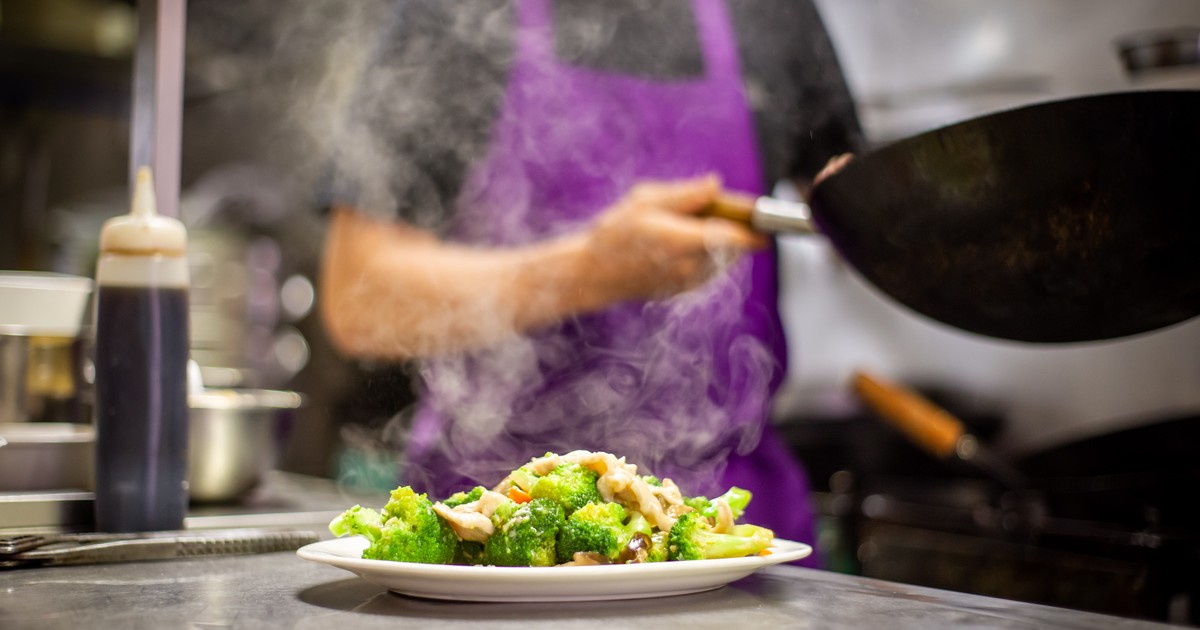Efficiently determining the staffing requirements for catering businesses is crucial for delivering exceptional service and ensuring the success of every event. In this blog post, we will provide you with valuable insights and practical tips to help you create an accurate and well-defined staffing plan that aligns with the demands of each occasion to provide seamless experiences and exceed client expectations.
Step 1: Gather Event Information
The first step in accurately determining catering staffing requirements and ensuring the smooth execution of an event is by gathering relevant event information. Before finalizing the work schedule for your team, you need to obtain essential details to establish a framework for developing an adequate staffing plan.
Key factors to consider include:
- Date of the event
- Time of the event
- Duration of the event
- Capacity limit of venue
- Number of expected guests
Having this info on hand allows for better workforce scheduling coordination with catering staff. It enables you to ensure you have the appropriate number of staff members to allocate to provide efficient and optimal service throughout the event.
This information can help you determine how many of your current staff are available for a specific event based on the profile information you already have on file for them. For example, if you have a worker living near the event location, you can prioritize them over someone requiring a longer travel distance. Knowing the type of event being held will also allow you to start mentally coordinating which staff would be the best choice based on their skill set.
By gathering and analyzing this event information, you can lay the groundwork for accurate staffing calculations and create a seamless experience for clients and guests.
Step 2: Specify Catering Requirements
When calculating staffing requirements, you need to define the specific catering demands for each event, such as service style, whether the event will include a cocktail reception, and if it will be a buffet-style arrangement or sit-down plated dinner service.
In addition to the core catering services, it's crucial to consider any additional services that may be required. For instance, if the event includes a bar, you'll need to allocate staff members for bartending duties. Similarly, if there is a coat check area, you'll need someone on hand to assist guests with their belongings.
Step 3: Define Roles and Responsibilities Of Staff Members
Everyone has a role to play in the successful execution of an event, and one of the best ways to ensure this is by establishing early on the roles and responsibilities of each key position within your team.
Key positions for catering events typically include
The head chef, sous-chef or kitchen manager who oversees the culinary aspects and ensures the food preparation quality Servers who play a vital role in providing exceptional service to guests, attending to their needs, and ensuring a smooth dining experience Bartenders who take on the responsibility for mixing and serving beverages to guests
As previously mentioned, don't forget to list the responsibilities of any other additional specialized position, such as coat check attendant or event coordinator.
While it may seem obvious to experienced staff members what their responsibilities are, you don't want to forget anything on the big day. For example, servers may be responsible for setting up tables, taking orders, and serving food and beverages, but are they also responsible for clearing tables? Will bussers be needed to perform this task?
Clearly defining roles and responsibilities lets your staff understand what is expected of them to ensure a well-organized and efficient workflow and solidify your catering business' reputation for professionalism and excellence.
Step 4: Evaluate Workload For The Entire Event
In order to accurately assess the workload of an event, you'll need to figure out how much time will be required for the main tasks, including the setup, service, and cleanup. Keep in mind the intricacies of the menu, as dishes with a higher level of complexity, may demand extra preparation time and require resources with specialized skills.
But there's even more to consider, as the art of table settings and decorating should not be overlooked when gauging the workload. Elaborate wedding presentations may require additional staff members to ensure every detail is flawlessly set up and meticulously maintained for the big event.
The size and layout of the venue will also impact your workload, as larger venues with multiple rooms or floors will require additional staff members to ensure that survival remains efficient throughout the entirety of the event. The same applies if you must incorporate outdoor functions or transport on-site equipment and supplies.
Step 5: Establish Staff-to-Guest Ratio
Establishing the appropriate staff-to-guest ratio is crucial in effectively managing catering events. Having the proper balance of staff-to-guest allows you to hire the right resources to provide attentive and efficient service to all attendees. Too few and the quality of the service will lead to dissatisfied clients; too many and you've just increased your labour cost, leading to a reduction in profits.
Determining the golden ratio includes analyzing factors such as event type and service style. Plated dinners typically require a higher staff-to-guest ratio due to the preparation and synchronized service involved. On the other hand, buffet-style events generally permit a slightly lower ratio, as guests serve themselves.
Step 6: Calculate The Required Staff Count
Once you have evaluated the workload and established the staff-to-guest ratio, the next step is determining the number of staff members needed. To do this, divide the workload estimate, including setup and cleanup, by the working hours of each staff member. This calculation helps you understand how many hours each worker will be occupied during the event.
Once you've established an initial count, make adjustments based on the selected staff-to-guest ratio and other relevant factors, including the skill set of each staff member. Some tasks, such as bartending and meat carving, require specialized skills and will impact the distribution of responsibilities. In addition, always ensure breaks and shift rotations are considered to keep staff energized and attentive throughout the event.
Step 7: Prepare For Unforeseen Events
While you always hope that things run smoothly, the reality is that emergencies and last-minute changes in plans are not uncommon in the world of event catering. This is why including a buffer in your calculations can allow you to be better prepared to handle unforeseen circumstances while maintaining a seamless and exceptional catering experience.
Furthermore, consider establishing relationships with temp agencies or having backup staff available. They utilize the latest temp agency software to provide experienced personnel on short notice, allowing you to quickly supplement your team in case of emergencies or last-minute changes. Having a pool of backup staff members who are familiar with your business and trained in your operations ensures that you have a reliable resource to rely on when unexpected staffing needs arise.
Having contingency plans and backup staff in place not only safeguards your reputation, but also demonstrates your commitment to professionalism and customer satisfaction. Prioritizing preparedness allows you to navigate unexpected hurdles and deliver exceptional catering experiences confidently, no matter the challenges.
Step 8: Review And Modify Your Staffing Management Plan
Reviewing and modifying your staffing plan before the event is essential, as it allows you to make any necessary adjustments before you start coordinating and calculating staffing needs. It involves carefully evaluating the plan within your budget constraints, considering staffing costs and aligning them with your financial resources.
By making necessary adjustments based on the event's specific needs, such as guest count, menu complexity, and event timeline, you can optimize your staffing resources and enhance overall operational efficiency. This proactive approach allows you to anticipate and address potential challenges beforehand, ensuring that you have the right staff to deliver exceptional service and exceed client expectations.
In addition, incorporating feedback from previous events can be helpful to consider before you finalize your staffing plan. Reflect on areas where staffing may have been inadequate or excessive and ensure you're not repeating the same error. Continuous improvement and adaptation are essential for staying responsive to evolving demands.
Step 9: Schedule Staff Using The Right Software
To streamline your operations and ensure everyone is on the same page, provide clear instructions and detailed job descriptions to each staff member. As previously mentioned, clearly outline your staff's roles, responsibilities, and expectations for each event and communicate this to them to clear up any confusion and ensure you reach your end objective.
When coordinating shift schedules, consider your team members' availability and preferences, and assign specific roles and shifts based on their skills, experience, and strengths. Consider factors such as their familiarity with certain types of cuisine or cooking methods, ability to handle high-pressure situations, or expertise in bartending or serving.
Utilize event staff management scheduling software to simplify the process and help you avoid scheduling conflicts or double bookings. Ensure the schedule is communicated well in advance, giving staff members ample time to make any necessary arrangements for their personal life and encouraging them to communicate any scheduling concerns, so they can be addressed promptly and effectively to foster an open and positive work environment.
Step 10: Monitor and Adapt During the Event
During the event, continuously monitoring and adapting your staffing approach is vital. If you cannot be present throughout the event, designate an on-site liaison who can oversee the event, facilitate communication, and resolve any issues that may arise. Ideally, choose someone well-versed in the staffing plan and who can provide support as needed.
Your on-site manager will have to closely observe real-time requirements, guest flow, and service pace and should monitor guest satisfaction levels. They should also identify potential bottlenecks or high-demand areas and adjust staffing levels accordingly, redistributing staff to address busy food stations or overcrowded areas.
Without a doubt, flexibility is crucial in this industry, and unexpected situations are common. Remember to remain adaptable and make on-the-spot adjustments to optimize staff utilization and ensure guest satisfaction. Maintain regular communication with the liaison and staff, gathering feedback and addressing issues promptly.
Additionally, leveraging modern staffing management software solutions can streamline the process and enhance operational efficiency. With careful planning and adaptation, catering businesses can create unforgettable experiences, meet client demands, and maintain a competitive edge in the industry.










